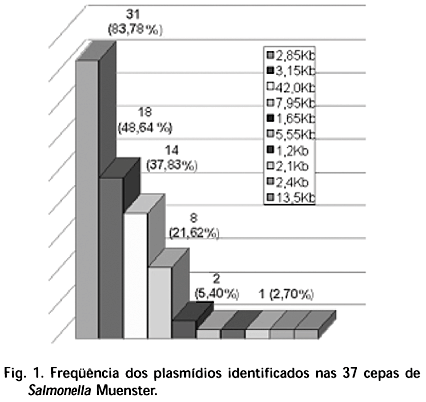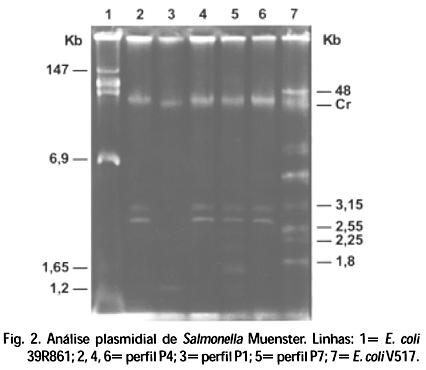Thirty-eight strains of Salmonella Muenster, isolated from swine and the abattoir environment, in the State of Rio de Janeiro, Brazil, from March 1991 to February 1992, were analyzed for the presence of plasmids. The strains were selected according to their profile regarding the antimicrobials: streptomycin, tetracycline, sulphonamide and sulfametoxazole-trimethoprim. Thirteen strains were resistant to one or several antimicrobials, 18 with intermediate degree and seven were sensitive. Plasmids varying in size from 1.2 Kb to 42 Kb were detected in 37 (97.36%) of the 38 samples, corresponding to 11 different profiles (P1- P11), varying from 1 to 6 plasmids per model. The number and plasmids diversity was greater than the resistance marks for strains. The plasmid of 2.85 Kb was the most frequent, being present in 83.78% of the 37 strains; only the one of 7.5 Kb was detected at the two slaughterhouses. There was no parallelism between resistance pattern and plasmidial profile, and a same antibiotype was found in several plasmidial profiles. The results of the present investigation, allowed us to conclude that the plasmid characterization is an useful and simple tool for the epidemiological typing of this sorovar.
Salmonella Muenster; swine; antimicrobial resistance; plasmids






